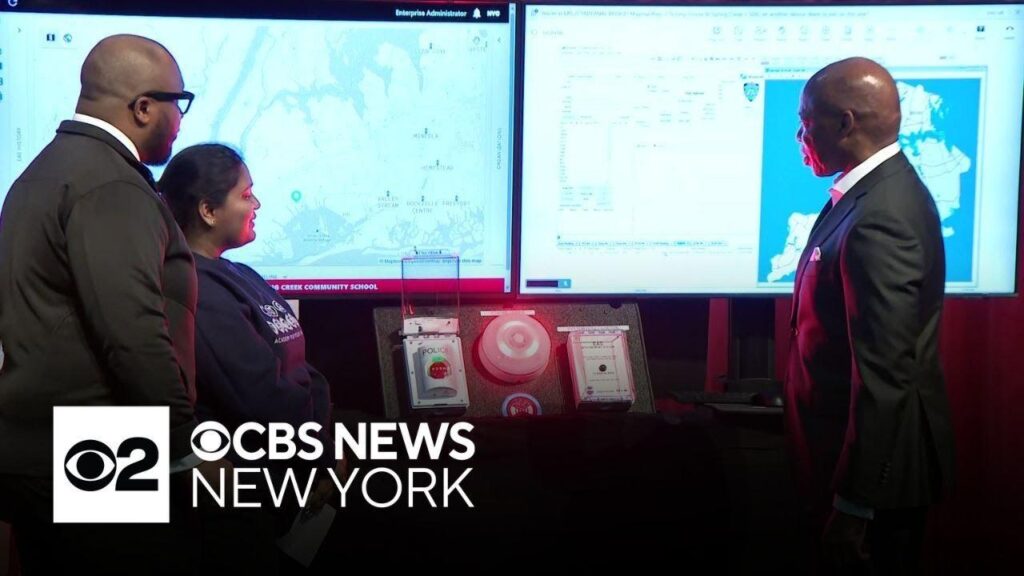Transforming Student Safety: NYC Schools Deploy Innovative Emergency Alert System
In an effort to bolster student protection, New York City public schools have introduced a cutting-edge emergency alert platform tailored specifically for active shooter scenarios. This advanced system facilitates instantaneous communication throughout school facilities, enabling rapid, coordinated responses that could prove lifesaving during emergencies. As school safety remains a pressing concern nationwide, NYC’s initiative exemplifies how metropolitan districts can utilize modern technology to safeguard their educational communities.
Real-Time Alerts Driving Faster Responses in NYC Schools
Addressing escalating worries about campus security, NYC’s new alert system delivers immediate notifications to students, faculty, and first responders via multiple channels. By integrating mobile alerts, PA announcements, and digital signage, the system drastically reduces the time between threat detection and action. This swift communication helps mitigate confusion and panic, allowing schools to promptly initiate lockdowns, evacuations, or other protective measures.
- Rapid alerts sent simultaneously to smartphones, intercoms, and electronic boards
- Automated lockdown procedures triggered alongside alert dissemination
- Direct, secure links established with NYPD and emergency services
- Intuitive interface enabling staff to verify and report threats quickly
| System Feature | Advantage | Typical Response Time |
|---|---|---|
| Mobile Push Notifications | Instant awareness for all users | Less than 5 seconds |
| Automated Lockdown Activation | Minimizes human delay and error | Under 10 seconds |
| Direct Law Enforcement Interface | Facilitates immediate police response | Real-time updates |
Seamless Integration with Existing Security Measures
The emergency alert system is designed to work in harmony with NYC’s current security infrastructure, enhancing overall situational awareness and response coordination. Sensors strategically placed throughout school campuses detect suspicious activity and automatically trigger alerts that notify administrators, local police, and emergency personnel. This interconnected approach synchronizes surveillance cameras, controlled access points, and communication networks, significantly accelerating threat identification and response.
- Centralized control system initiates lockdowns automatically
- Encrypted communication channels ensure secure information exchange between staff and responders
- Real-time tracking of alert origins and responder locations for efficient coordination
| Technology Element | Function | Benefit |
|---|---|---|
| AI-Driven Intrusion Detection | Monitors unauthorized access or movement | Accelerates threat recognition |
| Mobile Alert Application | Delivers instant notifications | Enables broad, real-time communication |
| Encrypted Radio Network | Maintains secure communication lines | Ensures reliable contact under all conditions |
Expert Insights on the Critical Role of Instant Communication
Safety professionals widely agree that rapid communication is vital in reducing casualties and chaos during active shooter events. Immediate alerts empower schools to enact lockdowns within seconds, granting students and staff precious time to find safety. Dr. Michael Carter, a leading expert in emergency response, highlights that “every moment saved can be the difference between survival and tragedy.” Real-time updates also allow schools to provide clear instructions, guiding occupants away from danger zones effectively.
Recent research comparing traditional alert methods with advanced systems reveals dramatic improvements in response times and outcomes. Schools equipped with modern alert technology have demonstrated:
| Metric | Conventional Systems | Modern Alert Systems |
|---|---|---|
| Average Alert Dispatch Time | 4 to 6 minutes | 10 to 15 seconds |
| Lockdown Activation | Approximately 5 minutes | Immediate |
| Reduction in Casualties | Up to 20% | Up to 60% |
- Clear, concise communication: Ensures messages are actionable and easy to understand.
- Multi-platform alert delivery: Simultaneous notifications via PA systems, SMS, and mobile apps.
- Automated threat classification: Quickly identifies emergency types to tailor responses.
Experts also emphasize that these technologies enhance collaboration with law enforcement, enabling synchronized, rapid interventions that can significantly improve incident outcomes.
Guidance for Other Districts Adopting Emergency Alert Technologies
School districts considering similar emergency alert solutions should focus on ensuring smooth integration with their existing communication frameworks to guarantee swift alert distribution. Early collaboration with local law enforcement agencies is crucial to optimize system effectiveness and facilitate real-time coordination during crises. Furthermore, regular training for educators and staff is essential to ensure familiarity with protocols and reduce reaction times when emergencies arise.
Customizing alert triggers and messaging to fit the unique characteristics of each district-such as campus layout, population density, and language needs-is also vital. The following table highlights key features and considerations for decision-makers evaluating alert systems:
| Feature | Advantage | Considerations |
|---|---|---|
| Direct Mobile Alerts | Instant communication to all users | Requires up-to-date contact databases |
| Two-Way Communication | Allows recipients to provide feedback | Needs dedicated monitoring resources |
| Automated Lockdown Activation | Speeds up securing the campus | Must align with existing security policies |
| Multi-Language Support | Promotes inclusivity and accessibility | Requires accurate and culturally sensitive translations |
Conclusion: NYC Schools Pioneering the Future of Campus Safety
By deploying this innovative emergency alert system, New York City schools are setting a new benchmark for safety standards in educational environments across the country. Leveraging real-time communication technology, the initiative aims to accelerate response times and enhance protection for students and staff during active shooter incidents. While challenges in implementation and training remain, this advancement represents a critical leap forward in addressing one of the most urgent security challenges facing schools today. Stakeholders nationwide will be closely monitoring the system’s performance and evolution in the coming months.













